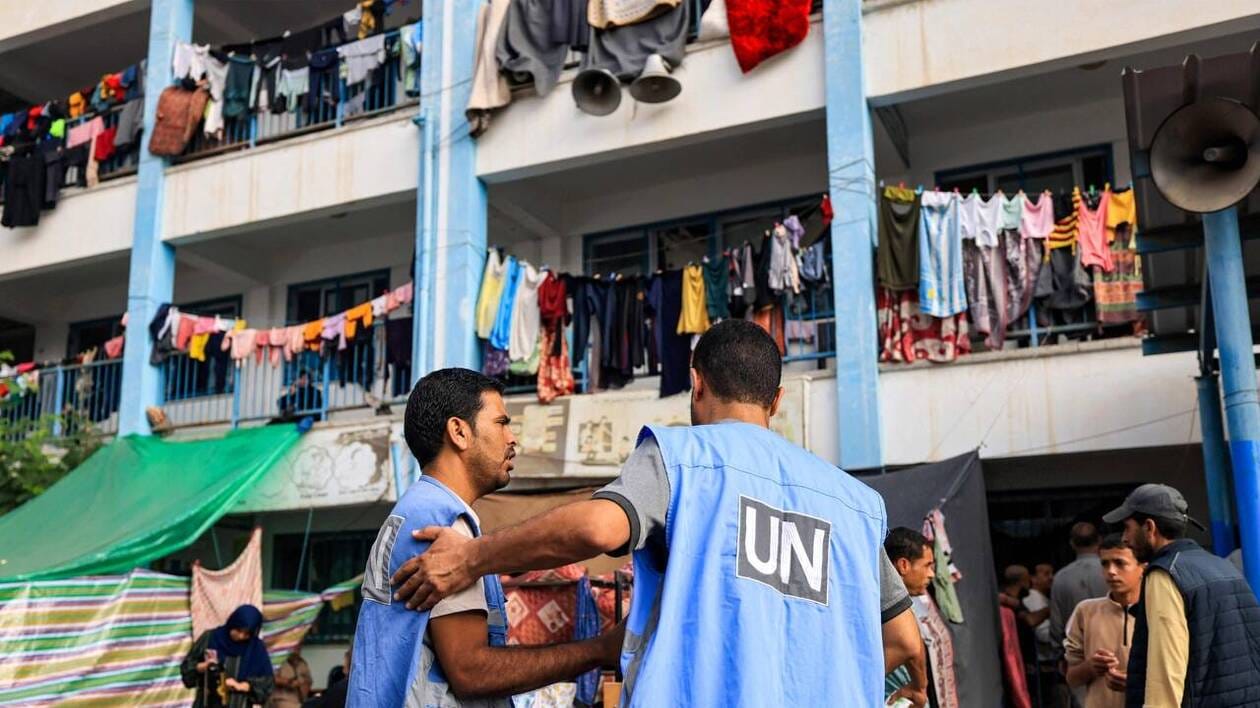According to the UNRWA, 1.4 million Palestinians are seeking refuge in UN facilities.
Israeli airstrikes in the Gaza Strip have tragically claimed the lives of at least 300 individuals taking shelter in 180 UN facilities, the United Nations Relief and Works Agency for Palestine Refugees (UNRWA) reported.
Juliette Touma, UNRWA Director of Communications, said “1.4 million people in Gaza sheltering in UNRWA facilities and many more in the vicinity, sleeping outside.”
The remarks mirrored her earlier comments made on December 30 in an interview with the BBC, where she described over 1.4 million people being displaced by Israeli aggression, now residing primarily in schools repurposed as emergency shelters.
As Israel’s assault on the trip continues, people are desperately seeking refuge in any available space, including streets and overcrowded apartments.
Touma added that some apartments are housing up to 70 individuals, while others with financial means are resorting to renting rooms. Tragically, many have no choice but to live in open spaces, such as parks and even in their cars, as they struggle to find safety in a place devoid of secure zones.
Amidst the global New Year celebrations, the UNRWA highlighted the contrasting situation in Gaza, saying: “While the world is crowded with New Year’s celebrations, the streets of southern Gaza Strip are crowded with displacement.”
In a statement made last Thursday, UNRWA spokesperson Adnan Abu Hasna disclosed alarming figures, indicating that 5% of Gaza’s population is now categorized as either martyrs, wounded, or missing.
Abu Hasna underscored the worsening humanitarian crisis, marked by a dramatic increase in intestinal, respiratory, and skin diseases. He raised concerns about the alarming spread of meningitis among children and epidemic hepatitis, linked to the consumption of contaminated water.
A big part of Gaza’s population is being pushed towards Rafah, a border city with an existing population of approximately 250,000. This shift is creating multifaceted challenges, particularly in terms of resource allocation and infrastructure.
According to Gaza’s health authorities, these attacks have led to at least 21,822 Palestinian casualties, including 56,451 injuries.
Gaza now lies in ruins, with 60% of its infrastructure either damaged or destroyed. The Israeli offensive has displaced nearly 2 million residents, plunging the area into acute shortages of essential supplies, including food, clean water, and medicine.
In response, Hamas’s military wing, the Qassam Brigades, has admitted to launching at least 20 rockets towards Israel. This coincides with Israel’s declaration of prolonging its military campaign in Gaza.
Sunday saw further devastation with at least 68 Palestinians killed in new Israeli airstrikes. Among the casualties was former Palestinian Minister of Awqaf and Religious Affairs Yousef Salameh, who was killed in an airstrike targeting his home in central Gaza, as confirmed by the Palestinian news agency Wafa.
The crisis is most acute for children in Gaza, who face life-threatening risks from hunger and thirst, especially in Gaza City and the northern regions of the Strip.
Families are increasingly struggling to access even one meal a day, making them to rely on unsafe cooking methods.







